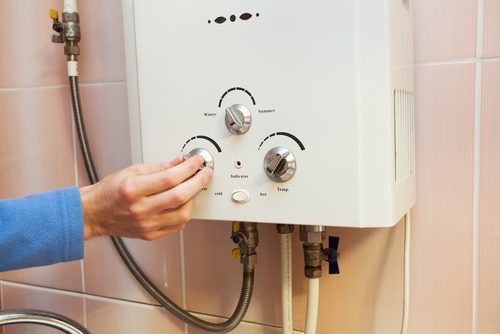Steps to Properly Maintain Your Home's Hot Water SystemBest Practices for Maintaining Your Home's Hot Water System
Steps to Properly Maintain Your Home's Hot Water SystemBest Practices for Maintaining Your Home's Hot Water System
Blog Article
This post underneath on the subject of How to Maintain Your Water Heater & Prolong its Life is exceedingly entertaining. Read on and make your own ideas.

Hot water is vital for day-to-day comfort, whether it's for a refreshing shower or washing meals. To ensure your warm water system runs successfully and lasts much longer, normal upkeep is crucial. This post gives sensible ideas and understandings on just how to keep your home's warm water system to stay clear of disturbances and expensive repair work.
Introduction
Preserving your home's warm water system may appear complicated, yet with a couple of easy steps, you can ensure it operates smoothly for several years to find. This overview covers whatever from comprehending your hot water system to do it yourself upkeep ideas and understanding when to call in professional help.
Significance of Maintaining Your Hot Water System
Routine upkeep not just extends the lifespan of your hot water system but also ensures it operates effectively. Overlooking maintenance can result in decreased effectiveness, greater power costs, and even premature failure of the system.
Signs Your Hot Water System Needs Maintenance
Knowing when your hot water system needs attention can avoid major issues. Look out for signs such as inconsistent water temperature, odd noises from the heating system, or corroded water.
Purging the Hot Water Heater
Purging your hot water heater eliminates sediment accumulation, improving performance and lengthening its life.
Monitoring and Changing Anode Rods
Anode rods prevent corrosion inside the tank. Evaluating and changing them when worn is crucial.
Facility Concerns Needing Expert Help
Examples consist of significant leakages, electric issues, or if your water heater is consistently underperforming.
Regular Expert Maintenance Benefits
Specialist upkeep can include comprehensive assessments, tune-ups, and making sure compliance with safety and security criteria.
Examining and Adjusting Temperature Level Setups
Adjusting the temperature level setups ensures ideal efficiency and safety.
Do It Yourself Tips for Maintenance
You can execute several upkeep tasks yourself to maintain your hot water system in leading condition.
Looking for Leaks
Frequently evaluate pipelines and connections for leakages, as these can result in water damage and greater costs.
Comprehending Your Hot Water System
Prior to diving into upkeep tasks, it's handy to comprehend the basic elements of your hot water system. Typically, this consists of the water heater itself, pipelines, anode poles, and temperature controls.
Month-to-month Maintenance Tasks
Normal regular monthly checks can aid catch small issues prior to they escalate.
Testing Stress Relief Valves
Checking the pressure safety valve ensures it operates correctly and stops too much pressure build-up.
Insulating Pipelines
Insulating warm water pipelines decreases warm loss and can save energy.
When to Call a Specialist
While DIY maintenance is beneficial, some problems call for professional competence.
Verdict
Regular upkeep of your home's warm water system is important for effectiveness, long life, and price savings. By complying with these ideas and knowing when to seek specialist aid, you can guarantee a reputable supply of warm water without unanticipated disruptions.
How to Maintain an Instant Hot Water Heater
Before tinkering with your hot water heater, make sure that it’s not powered on. You also have to turn off the main circuit breaker and shut off the main gas line to prevent accidents. Also turn off the water valves connected to your unit to prevent water from flowing into and out of the appliance. 2. When you’re done, you have to detach the purge valves’ caps. These look like the letter “T” and are situated on either side of the water valves. Doing so will release any pressure that has accumulated inside the valves while at the same time avoid hot water from shooting out and burning your skin. 3. When the purge valves’ caps are removed, you have to connect your hosing lines to the valves. Your unit should have come with three hoses but if it didn’t, you can purchase these things from any hardware or home repair shops. You can also get them from retail stores that sell water heating systems. Read the user’s manual and follow it to complete this task properly. When the hosing lines are connected, open the purge port’s valves. 4. You should never use harsh chemical cleaners or solutions when cleaning your unit. Make use of white vinegar instead. It should be undiluted and you’ll probably use about 2 gallons. 5. Now flush your water heater. This task should probably take about 40 minutes. We can’t give you specific directions for this because the procedure is carried out depending on the type, model and brand of your heater. With that being said, refer to the user’s manual. 6. When you’re done draining the unit, you have to turn off the purge port valves again. Remove the hosing lines that you earlier installed on each of the water valves. Put the valve caps (purge port) back in their respective places and be very careful so as not to damage the rubber discs that are found inside these caps. 7. Now that everything’s back in place, check your user’s manual again to find out how to reactivate your water heating system. 8. Once it is working, turn one of your hot water faucets on just to let air pass through the heater’s water supply pipes. Leave the tap on until water flows smoothly out of it. https://www.orrplumbing.com/blog/2014/september/how-to-maintain-an-instant-hot-water-heater/

We had been shown that write-up about Water Heater Maintenance Tips You Can't Afford to Forget through a pal on a different domain. Liked our content? Please share it. Help someone else check it out. I recognize the value of your readership.
Visit Homepage Report this page